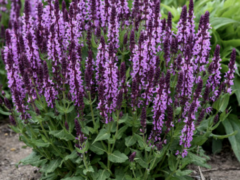
Salvia ‘Rose Marvel’
Salvia nemorosa 'Rose Marvel'
Dark pink flowers open on darker pink calyxes on a these perfectly rounded, dense and … Continued
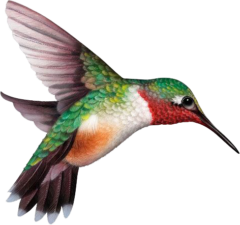 Hummingbirds, bees and butterflies are well-known pollinators, but there are thousands of unsung pollinator heroes, including moths, wasps, flies, and beetles, many mammals, birds, and reptiles, who also take on the job.
Hummingbirds, bees and butterflies are well-known pollinators, but there are thousands of unsung pollinator heroes, including moths, wasps, flies, and beetles, many mammals, birds, and reptiles, who also take on the job.
Pollinators move from plant to plant, fueling up with pollen and nectar from blooming trees, shrubs, perennials, annuals, vegetable plants, and herbs. As they move, the pollinators transport and deposit pollen, fertilizing plants and allowing them to reproduce.
Pollinator plants can be native and non-native, but not all flowering plants are equal when it comes to providing the highest quality protein-rich pollen. Many hybrids don’t even produce pollen at all. The following list includes pollen-rich plants to include in your garden to provide pollinators with food.
Local butterfly expert Lenora Larson has created these informational handouts. You can download them here!
• Butterflies: Flying Flowers in your Garden!
• A Vital Connection: Native Plants and Butterflies
• Long Lips Farm Caterpillar Foodplants
• Butterfly Bartending: Nectar Flowers
• Long Lips Farm: Selected Butterfly Nectar Flowers
• Bee Friendly: Plants for Bees and Other Pollinators
Since 1970 the population of North American birds has dropped nearly 30% — almost three billion birds have vanished from our forests, grasslands, and backyards in less than a human lifetime. It’s a chilling fact that makes it clear that we must act as individuals to help ensure their survival.
Most importantly, ninety-six percent of all terrestrial bird species rear their young on insects so it is also important to grow plants that feed insects to provide a well-rounded habitat in your garden.
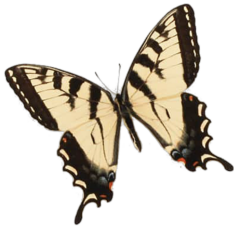

Salvia nemorosa 'Rose Marvel'
Dark pink flowers open on darker pink calyxes on a these perfectly rounded, dense and … Continued
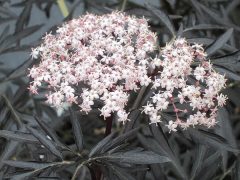
Sambucus nigra
Deep black foliage is finely cut, giving it an effect similar to Japanese maple but … Continued
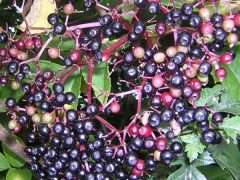
Sambucus canadensis
Elderberries are super easy to grow, good for your health and great for wildlife. These … Continued
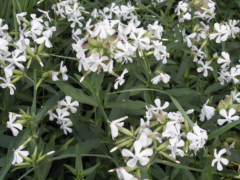
Saponaria officinalis
Small, white, star-shaped blooms open in clusters in summer over spreading green foliage. Plants tolerate … Continued
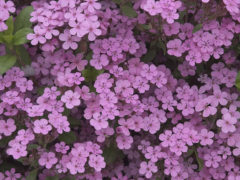
Saponaria ocymoides
This groundcover will carpet the most difficult sites with bright pink flowers. A vigorous grower, … Continued
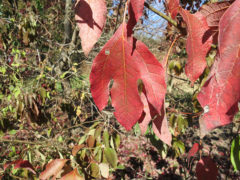
Sassafras albidum
Trees have three distinctly different 3-5” long leaves: three-lobed, mitten-shaped, and simple, that turn red, … Continued
Satureja montana
With its strong spicy flavor, winter savory goes well with beans and meats, and including … Continued
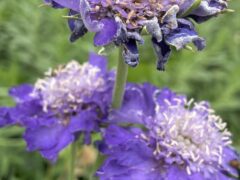
Scabiosa columbaria ‘Butterfly Blue’
Perennial Plant Association 2000 Perennial Plant of the Year! A compact, long-blooming perennialproduces flowers from … Continued
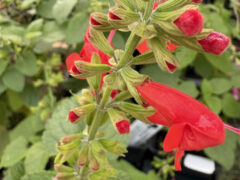
Salvia coccinea
This showy southern native grows loose, widely blooms on spikes from spring through fall. Grow it … Continued
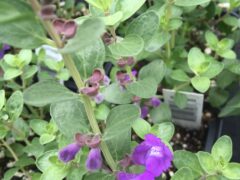
Scutellaria resinosa ‘Smoky Hills’
‘Smoky Hills’ is an improved selection of prairie skullcap originally collected in the Smoky Hills … Continued
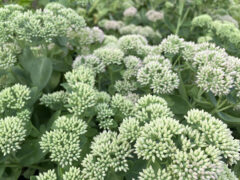
Sedum 'Herbstfreude'
Large salmon-pink flower heads tinged with bronze and open late summer through fall. Plants grow … Continued
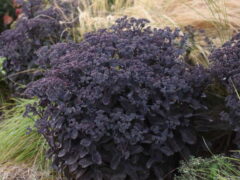
Sedum 'Back in Black'
An upright sedum with near-black leaves! When late summer rolls around, flowers with deep garnet … Continued